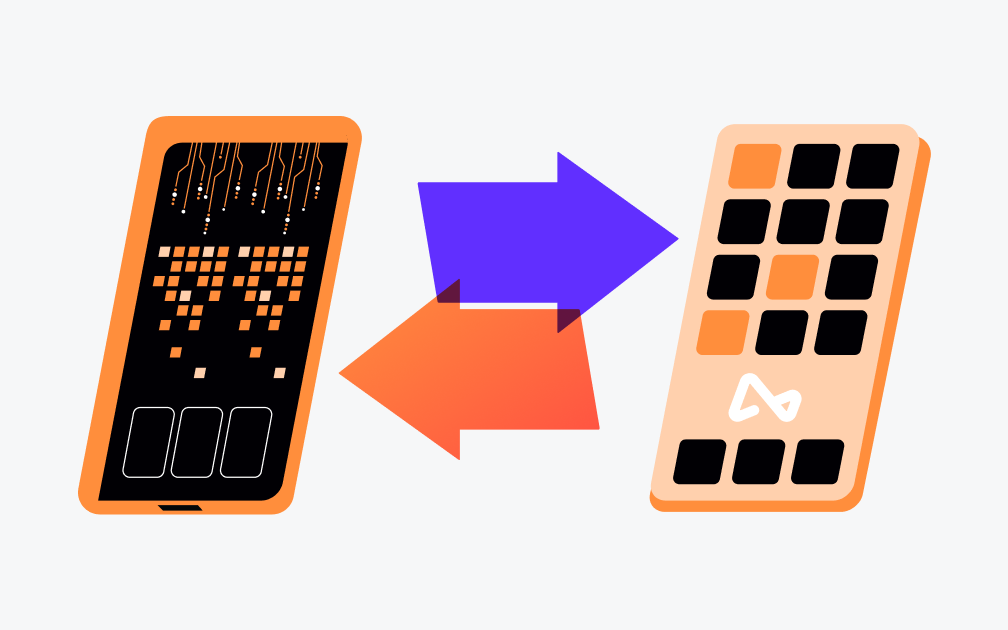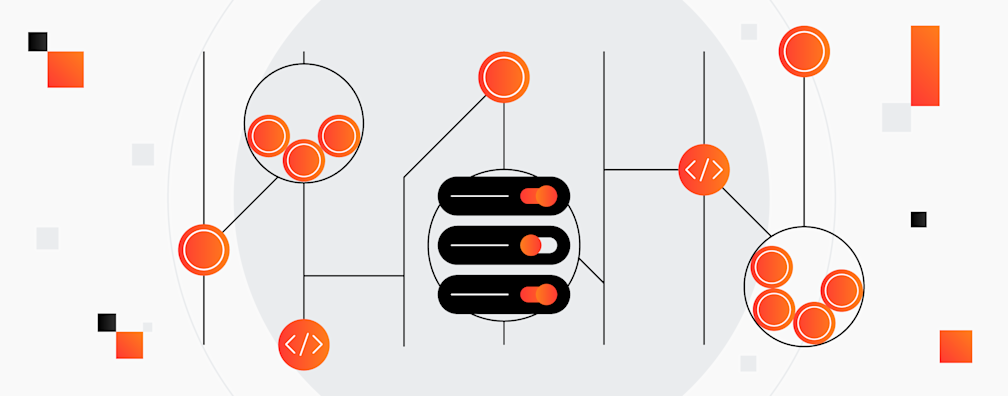What is an International Bank Account Number (IBAN)?

- •Why were IBANs introduced?
- •How do IBANs work?
- •What does an IBAN look like?
- •Where can I find my IBAN?
- •Which banks use IBANs?
- •Is it safe to share your IBAN?
- •What happens if I enter the wrong IBAN?
- •How do IBAN and SWIFT/BIC codes differ?
- •What is a Single Euro Payments Area (SEPA)?
- •How much does it cost to send money with an IBAN?
- •Try Airwallex for faster and more efficient global payments
An International Bank Account Number (IBAN) is a standardised number used by financial institutions, primarily in Europe, to identify individual bank accounts when processing international payments. If you’re sending or receiving money overseas — to or from Europe — you may need to provide your or your recipient's IBAN to complete the transaction. It's important to note that IBANs are separate from bank account numbers and SWIFT/BIC codes, both of which may also be required for international transfers.
Not all bank accounts come with an IBAN. Countries like Canada, Australia, the US, China, and New Zealand do not use IBANs. Instead, Canadian banks, for example, use a SWIFT code (also known as a BIC code) and a bank account number or transit number when processing international wire transfers.
Why were IBANs introduced?
Before IBANs were introduced, European countries all used different bank account number formats. This led to errors, delayed payments, and extra costs when processing international payments.
In 1997, the International Organisation for Standardisation (ISO) published ISO 13616:1997 to standardise European bank account numbers for international transfers. Later, the European Commission for Banking Standards (ECBS) produced an updated version of this standard, ISO 13616-2:2007.
Payment systems use IBANs to validate the sender and recipient’s account information before processing the payment. This prevents erroneous transactions, which can cause delays and additional costs.
How do IBANs work?
IBANs help banks and financial institutions streamline the process of sending and receiving cross-border payments by:
Identifying the country where the account is held: This helps route payments to the right country and ensures they’re processed according to local regulations.
Pinpointing the exact account number: This prevents payments from being misdirected or delayed due to incorrect account information.
Verifying the accuracy of the account number: IBANs have a check digit that checks if the account number is correct before the transfer starts. This check prevents failed payments caused by typos or errors.
What does an IBAN look like?
An IBAN can be up to 34 characters long and contains both numbers and letters. The length of your IBAN depends on your bank account’s geolocation. Here are some examples of IBAN lengths across Europe:
United Kingdom: 22 characters
France: 27 characters
Germany: 22 characters
Italy: 27 characters
Switzerland: 21 characters
Spain: 24 characters
Norway: 15 characters
Each IBAN is comprised of the following codes:
Country code: Each country participating in the IBAN system has its own code.
Check digit code: This code allows the sending bank to validate the accuracy of the IBAN.
Bank identifier code: This code identifies the bank or financial institution where the account is held.
Branch code: Also known as a sort code, this code identifies the bank and branch where the account is held.
Account number: This code identifies the individual bank account and is unique to each account.
The bank identifier code, branch code, and account number together make up the Basic Bank Account Number (BBAN). The BBAN is used to identify the specific bank account when you make an international transfer.
The IBAN format is the same across countries, although the length of the alphanumeric characters varies by country. Here's an example of what a UK IBAN looks like:

Where can I find my IBAN?
You can find your IBAN on your bank statements or banking app. If you’re having trouble finding your IBAN, ask your bank or use an IBAN checker or IBAN calculator.
Which banks use IBANs?
The IBAN system is most commonly used by banks in the eurozone. Banks in other countries, including the United Arab Emirates (UAE), Israel, and Ukraine, also use the IBAN system. You can see a full list of countries that participate in the IBAN system in the IBAN registry, which is published by SWIFT.
If your country doesn't participate in the IBAN system, your bank account won't have one. But, you'll still be able to send money internationally. If you have an IBAN but your recipient doesn't, you'll typically need to provide alternative details for their bank account, such as their account number and the bank's SWIFT/BIC code. Your bank will then use this information to route the payment through the appropriate channels.
Is it safe to share your IBAN?
Yes, it’s safe to share your IBAN with third parties. In fact, if you have an IBAN, you'll need to share it to be paid by a business or individual with an overseas bank account. IBANs can only be used to transfer money into your account, not to take money out of it, so you don’t need to be concerned about sharing these details.
You should be wary of sharing your CVV, credit or debit card expiry date, and the 16-digit number printed across your card. These details can be used to take money out of your account and should only be shared with trusted vendors when making secure payments.
What happens if I enter the wrong IBAN?
Entering the wrong IBAN can lead to different outcomes, depending on the nature of the error.
If you entered an IBAN that doesn't exist, the transfer will be rejected. You can try again using the correct information.
If you entered an IBAN that belongs to an active account, the transfer might be processed even if the recipient's name doesn’t match. Because the IBAN identified a valid account for the transfer, it tells the bank or financial institution that this transaction can go through. It can be hard to reverse such a transfer; you might need the recipient's help. If the recipient doesn't cooperate or can't be reached, you might not be able to get your money back.
Always double-check the IBAN before confirming any international transfer. If unsure, verify the information first with the recipient or your bank.
How do IBAN and SWIFT/BIC codes differ?
| SWIFT/BIC Code | IBAN |
|---|---|---|
Purpose | Identifies the bank involved in an international transaction | Identifies an individual bank account for international transactions |
Format | 8 or 11 alphanumeric characters (e.g. BOFAUS3N) | Up to 34 alphanumeric characters, including country code, check digits, bank code, and account number (e.g., GB29 NWBK 6016 1331 9268 19) |
Usage | Required for all international money transfers | Required for international transfers, primarily within Europe and some other countries |
Uniqueness | Unique to each bank or financial institution | Unique to each bank account |
Finding the Code | Available on your bank's website, online banking app, or through contacting your bank | Available on your bank statements, online banking app, or by contacting your bank. You can also use an IBAN calculator to generate it if you know your bank and account details. |
Example | A bank in the US might have the SWIFT code BOFAUS3N. | A bank account in the UK might have the IBAN GB29 NWBK 6016 1331 9268 19. |
What is a Single Euro Payments Area (SEPA)?
The Single Euro Payments Area (SEPA) is a network that facilitates the transfer of euros across 36 participating countries within and outside the European Union (EU). The SEPA payment system facilitates credit transfers and direct debit.
To make a SEPA payment, you'll need to provide your IBAN and SWIFT code. Not all European banks are SEPA members, so check if your bank is a member before making a payment.
How much does it cost to send money with an IBAN?
IBAN costs vary depending on several factors, such as which system you use (the SWIFT network, SEPA, or alternative payment services such as Airwallex), and whether you need to convert currencies.
Airwallex offers a fast, secure, and cost-efficient way for businesses to send and receive cross-border payments. With its Global Accounts, you can send money around the world at market-beating exchange rates. You can also receive payments in the same currency your customers pay in, avoiding unnecessary conversion fees.
Try Airwallex for faster and more efficient global payments
With our platform’s multi-currency Business Accounts, you can pay international suppliers and staff securely and accept payments from your global customers without high fees or long delays. You can open accounts with local bank details in 20+ currencies across 60+ countries in minutes.
With our FX and Transfers offering, you can collect and send money globally to over 150 countries in 60+ currencies at interbank rates, saving you on costly transfers – in fact, our customers have saved up to 80% on FX fees so far. 90% of transactions clear in one day, and 65% of these are instant, so you can be sure your money reaches its destination fast.
Faster payments at lower costs
Share

Erin is a business finance writer at Airwallex, where she creates content that helps businesses across the Americas navigate the complexities of finance and payments. With nearly a decade of experience in corporate communications and content strategy for B2B enterprises and developer-focused startups, Erin brings a deep understanding of the SaaS landscape. Through her focus on thought leadership and storytelling, she helps businesses address their financial challenges with clear and impactful content.
View this article in another region:AustraliaCanada - undefinedEurope - EnglishEurope - NederlandsNew ZealandSingaporeUnited KingdomUnited StatesGlobal
Related Posts

What is the SWIFT banking and payment system? How it works in 3 s...
•6 minutes

How long do international bank transfers take?
•5 minutes

International wire transfer: How to quickly send money abroad
•5 minutes